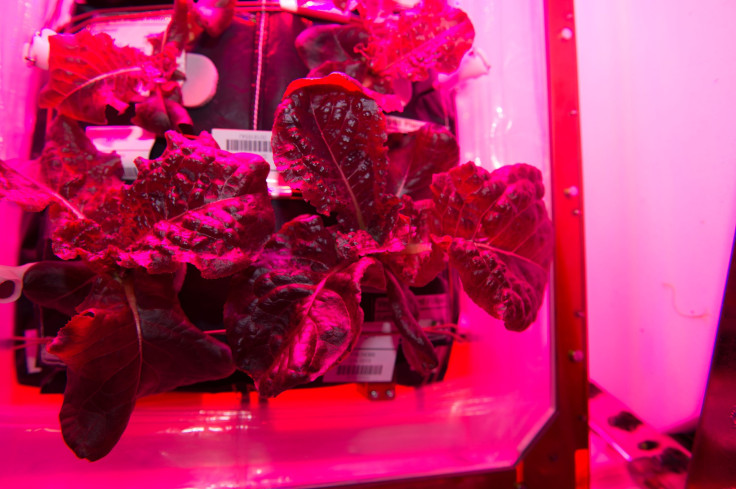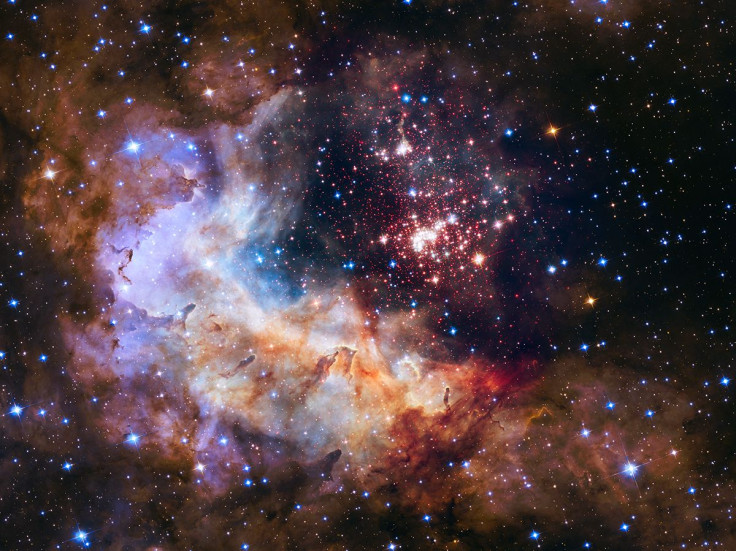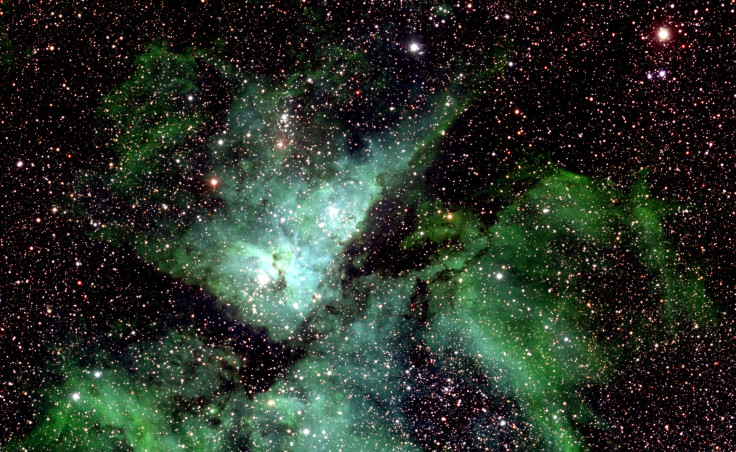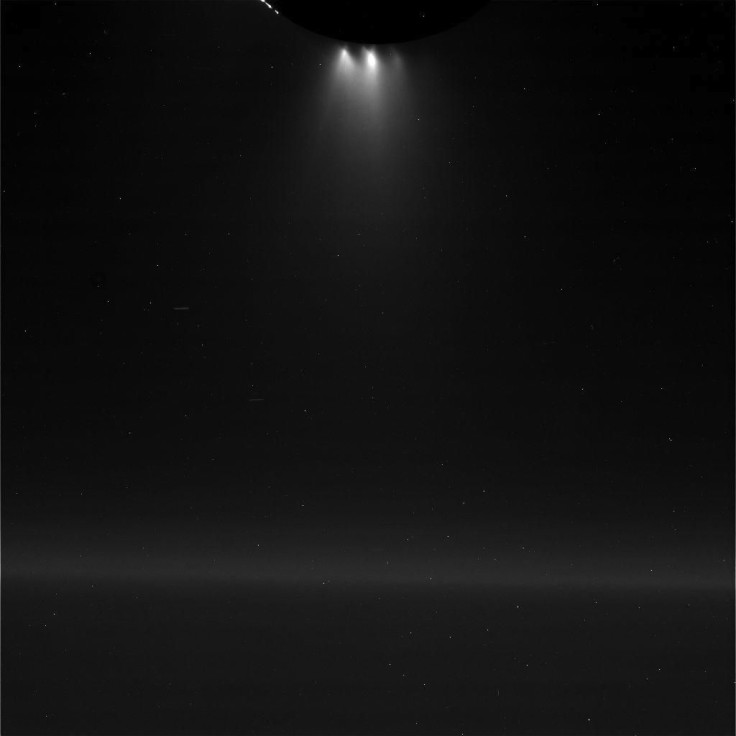A Year In Space Photos 2015: Pluto First Look, Water On Mars, EPIC View Of Earth And More

Space exploration re-entered the public consciousness in a big way in 2015. From the box-office success of "The Martian" to the groundbreaking discoveries on Mars and elsewhere, space dominated the headlines several times this year. And the accompanying images were pretty dramatic. Here's just a small sampling of the many highlights of space photography in 2015.
Water On Mars

The photo may not be the most visually stunning, but its importance cannot be overstated. Recurring slope linae (RSL) were discovered using data collected by NASA's Mars Reconnaissance Orbiter. The streaks are evidence of flowing water on Mars, NASA announced Sept. 28, 2015. "This is a significant development, as it appears to confirm that water -- albeit briny -- is flowing today on the surface of Mars," John Grunsfeld, associate administrator of NASA’s Science Mission Directorate, said in a statement.
Pluto's Heart

NASA's New Horizons spacecraft made a historic flyby of Pluto on July 14 to complete the space agency's exploration of the solar system. Previous photos of the former planet were blurry images that were best reserved for scientists looking to better understand changes on Pluto's surface. New Horizons revealed Pluto to be a complex world with ice mountains and a giant heart. New Horizons also gave people on Earth a comprehensive view of Pluto's moons, including the first image of Kerberos. New Horizons is on its way to its next target in the Kuiper Belt, but researchers will be spending the next decade discovering new aspects of Pluto using the data collected by the spacecraft.
EPIC Earth

The Deep Space Climate Observatory (DSCOVR) satellite's Earth Polychromatic Imaging Camera (EPIC) delivered this view of the sunlit side of Earth on July 6, from one million miles away at Langrange point 1 -- an area in space where the gravitational pull between the Earth and Sun cancel out to create a fixed orbit. From this vantage point, EPIC can deliver daily photos of Earth. The DSCOVR mission, a partnership between NASA, the National Oceanic and Atmospheric Administration (NOAA) and the U.S. Air Force, will be used by NOAA to refine its space weather warning system.
Space Veggies

In "The Martian," Mark Watney (Matt Damon) grew crops to help him survive on the Red Planet. NASA is not quite ready to harvest lettuce or potatoes from Mars, but the space agency grew red romaine lettuce aboard the International Space Station in August. As part of the Veggie plant growth experiment, crew members grew red romaine lettuce, dubbed "Outredgeous," using different-colored LED lights. The first crop passed the taste test by astronaut Scott Kelly. Having fresh produce will be important for astronauts in future deep-space missions. "The farther and longer humans go away from Earth, the greater the need to be able to grow plants for food, atmosphere recycling and psychological benefits," Gioia Massa, the Veggie payload specialist for NASA, said in a statement.
Hubble's Silver Anniversary

The Hubble Space Telescope has been delivering incredible photos for 25 years after it launched on April 24, 1990. In 2015, the venerable Hubble celebrated the milestone with this incredible image of Westerlund 2, a star cluster locatedin the constellation Carina, 20,000 light-years from Earth. Westerlund 2 contains 3,000 young stars burning bright and hot. The star cluster is around 2 million years old.
The Oldest Galaxy

A great photo is as much about its subject matter as it is its aesthetic quality. That's why this tiny dot in this photo is so great. This unremarkable blip is the oldest galaxy ever detected, according to California Institute of Technology astronomers. EGS8p7 is believed to be 13.2 billion years old, or just 600 years younger than the universe itself. The discovery, announced in September, came a few months after Yale University and University of California astronomers discovered EGS-zs8-1, a galaxy that's approximately 13.1 billion years old.
One Massive Photo

The largest astronomical image ever is a 46 billion pixel view of the Milky Way. The photo consists of 268 sections that users can explore online. The interactive image has a search function that allows users to jump to different points of interest. Scientists spent five years observing the Milky Way tracking variable brightness objects.
One Last Trip To Enceladus

NASA's Cassini spacecraft completed its final close flyby of Saturn's moon Enceladus in December. Prior to the final close approach, the spacecraft took a deep dive through the moon's geysers located in the south pole. Enceladus is an icy moon that may harbor a global ocean underneath its surface. The data collected during the deep dive will help scientists gain new insights into the potential for the moon to harbor life and the chemical makeup of the active plumes of Enceladus.
The Mystery Spots Of Ceres

As the Dawn spacecraft approached Ceres, the images sent back to Earth revealed some peculiar features of the dwarf planet. There were several bright spots on Ceres, most notably dual pinpoints of light within a crater, that could not be explained by experts. The spacecraft got closer, the crater was named Occator, but scientists were still unable to identify the bright spots of Ceres until December. The spots turned out to be a type of salt.
The International Space Station
Day 271. A colorful night over #Earth. #GoodNight from @space_station #YearInSpace pic.twitter.com/MiYDNkYgew
— Scott Kelly (@StationCDRKelly) December 23, 2015Astronauts aboard the space station are taking stunning photos on a daily basis. From NASA astronaut Terry Virts earlier this year to European Space Astronaut Tim Peake currently, it's well worth following the active astronauts aboard the space station. Be sure to follow NASA astronaut Scott Kelly, who has spent the majority of 2015 in space.
© Copyright IBTimes 2024. All rights reserved.






















